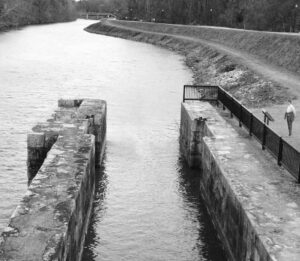Editor’s Note: At the request of his readers and in memory of Warner M. Montgomery, Ph.D, we will continue to publish his Adventure Travel stories for the time being.
Linda and I continued her 60th birthday celebration at the Augusta Canal.
Columbia has a historic canal. Augusta does, too.
Columbia’s canal is part of the Riverwalk Park. It has a beautiful paved walking trail along the old towpath. Occasionally, kayak trips are permitted on the three–mile canal. But most people don’t even realize the canal exists.
As much as I love our Columbia Canal and its historic heritage, after visiting the Augusta Canal I realize we are wasting away a terrific opportunity. Augusta’s canal is a huge tourist attraction. It is Georgia’s first federally designated National Heritage Area and soon to be a National Park. There are daily one–hour guided tours on historic canal boats as well as three–hour sunset cruises and moonlight music cruises. Anyone may kayak on the canal, fish from its banks, or bike along its towpath. One of the historic mills on the bank of the canal has been converted into a wonderful interpretive center.
Columbia and Augusta were established at the Fall Line, the extent of river transportation in the 18th century. They were inland ports. The Savannah River was Georgia’s major water system, the Congaree– Santee River system was South Carolina’s. However, their respective canals were constructed at different times for different reasons.
The first Columbia Canal was designed by Robert Mills and first administered by Abram Blanding as part of South Carolina’s $1.2 million Improvement Act of 1817. The grand scheme was to connect Charleston with Chattanooga, Tennessee, and thereby with the Mississippi–Missouri Rivers and the great western territories. We lost the race to the west to New York and the Erie Canal. As a result, New York rather than Charleston became the great American city.
The three–mile–long Columbia Canal was completed in 1824 and provided water transportation around the rapids to the Piedmont cities on the Broad and Saluda Rivers. The canal could not compete with the railroad that reached Columbia in 1838, and by 1850, the canal was abandoned.
Columbia’s second canal was built 40 years later for electric power rather than transportation. It was longer and wider and utilized part of the original canal. When completed in 1891, it provided electric power for the city’s lights and trolleys and the new textile mills and water supply for thirsty and dirty Columbians. It still provides water and electrical power in addition to its new recreational aspects.



Loading Comments